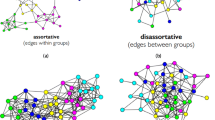Abstract
Many studies have discussed the widespread use of virtual reality (VR). However, few studies have investigated VR from the perspective of social media, even though social media has changed how people communicate and emerged as an essential marketing channel. An approach of two-layer hierarchical concept decomposition structure was proposed to investigate the temporal trend of VR development from the perspective of the public. Accordingly, Twitter posts related to VR in 2015 and 2016 were crawled and analyzed by our proposed approach. The mining results determined that public focus shifted from VR headsets in 2015 to content in 2016. This suggests that VR devices are perceived as having gradually developed and that the next challenge and business opportunity is VR content and applications. In the era of big data and artificial intelligence, our concept decomposition approach contributes to the content analysis of acquiring insight from massive user-generated content, which extracts temporal trends in a holistic view and individual insights on a detailed scale.
Access this chapter
Tax calculation will be finalised at checkout
Purchases are for personal use only
Similar content being viewed by others
References
IDC.: Worldwide shipments of augmented reality and virtual reality headsets expected to grow at 58% CAGR with low-cost smartphone VR devices being short-term catalyst, according to IDC 2017 [cited 2018 June 05]; Available from: http://www.idc.com/getdoc.jsp?containerId=prUS42807717
Kreiss, D.: Seizing the moment: the presidential campaigns’ use of Twitter during the 2012 electoral cycle. New Med. Soc. 18(8), 1473–1490 (2016)
Hays, S., Page, S.J., Buhalis, D.: Social media as a destination marketing tool: its use by national tourism organisations. Curr. Issues Tourism 16(3), 211–239 (2013)
Neubaum, G., Krämer, N.C.: Opinion climates in social media: blending mass and interpersonal communication. Hum. Commun. Res. 43(4), 464–476 (2017)
Turner, C.J., et al.: Discrete event simulation and virtual reality use in industry: new opportunities and future trends. IEEE Trans. Hum.-Mach. Syst. 46(6), 882–894 (2016)
Bovet, S., et al.: The critical role of self-contact for embodiment in virtual reality. IEEE Trans. Vis. Comput. Graph. 24(4), 1428–1436 (2018)
Shen, C.-W., et al.: Behavioural intentions of using virtual reality in learning: perspectives of acceptance of information technology and learning style. Virtual Reality (2018)
Zhao, X., et al.: Analysis of mental workload in online shopping: are augmented and virtual reality consistent? Front. Psychol. 8, 71 (2017)
Gerber, S.M., et al.: Visuo-acoustic stimulation that helps you to relax: a virtual reality setup for patients in the intensive care unit. Sci. Rep. 7(1), 13328 (2017)
Vince, J.: Introduction to virtual reality. Springer Science & Business Media (2004)
Burdea, G.C., Coiffet, P.: Virtual Reality Technology, vol. 1. John Wiley & Sons (2003)
Burdea, G.C.: Keynote address: haptics feedback for virtual reality. In: Proceedings of International Workshop on Virtual Prototyping. Laval, France (1999)
Jonassen, D.H.: Transforming learning with technology: beyond modernism and post-modernism or whoever controls the technology creates the reality. Educ. Technol. 40(2), 21–25 (2000)
Huang, H.-M., Rauch, U., Liaw, S.-S.: Investigating learners’ attitudes toward virtual reality learning environments: Based on a constructivist approach. Comput. Educ. 55(3), 1171–1182 (2010)
Huang, H.-M., Liaw, S.-S., Lai, C.-M.: Exploring learner acceptance of the use of virtual reality in medical education: a case study of desktop and projection-based display systems. Interact. Learn. Environ. 24(1), 3–19 (2016)
de Strulle, A.: Differentiation of the causal characteristics and influences of virtual reality and the effects on learning at a science exhibit. University of San Diego (2004)
Van Wyk, E., De Villiers, R.: Virtual reality training applications for the mining industry. In: Proceedings of the 6th International Conference on Computer Graphics, Virtual Reality, Visualisation and Interaction in Africa. ACM (2009)
Lu, J., et al.: Virtual learning environment for medical education based on VRML and VTK. Comput. Graph. 29(2), 283–288 (2005)
Higgins, G.A., et al.: Teleos™: development of a software toolkit for authoring virtual medical environments. Presence: Teleoperators and Virtual Environ. 6(2), 241–252 (1997)
Temkin, B., et al.: Web-based three-dimensional virtual body structures: W3D-VBS. J. Am. Med. Inform. Assoc. 9(5), 425–436 (2002)
Mikropoulos, T.A., Natsis, A.: Educational virtual environments: a ten-year review of empirical research (1999–2009). Comput. Educ. 56(3), 769–780 (2011)
Dickey, M.D.: Brave new (interactive) worlds: a review of the design affordances and constraints of two 3D virtual worlds as interactive learning environments. Interact. Learn. Environ. 13(1–2), 121–137 (2005)
Merchant, G.: Literacy in virtual worlds. J. Res. Reading 32(1), 38–56 (2009)
Pontonnier, C., et al.: Designing and evaluating a workstation in real and virtual environment: toward virtual reality based ergonomic design sessions. J. Multimodal User Interfaces 8(2), 199–208 (2014)
Chakraborty, G., Pagolu, M., Garla, S.: Text Mining and Analysis: Practical Methods, Examples, and Case Studies Using SAS. 2014: SAS Institute
Acknowledgements
This research was supported by the Ministry of Science and Technology, Taiwan, under contract number MOST 107-2410-H-008-042.
Author information
Authors and Affiliations
Corresponding author
Editor information
Editors and Affiliations
Rights and permissions
Copyright information
© 2019 Springer Nature Switzerland AG
About this paper
Cite this paper
Shen, Cw., Ho, Jt., Ma, Hw. (2019). Temporal Trend Analysis on Virtual Reality Using Social Media Mining. In: Visvizi, A., Lytras, M. (eds) Research & Innovation Forum 2019. RIIFORUM 2019. Springer Proceedings in Complexity. Springer, Cham. https://doi.org/10.1007/978-3-030-30809-4_18
Download citation
DOI: https://doi.org/10.1007/978-3-030-30809-4_18
Published:
Publisher Name: Springer, Cham
Print ISBN: 978-3-030-30808-7
Online ISBN: 978-3-030-30809-4
eBook Packages: EducationEducation (R0)




